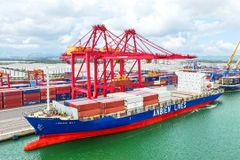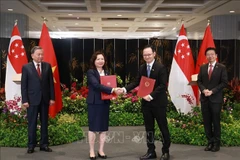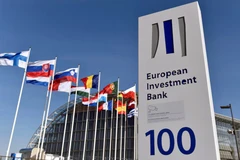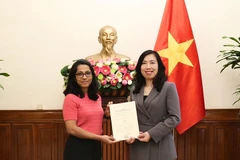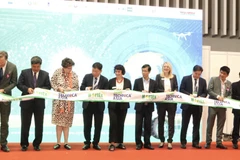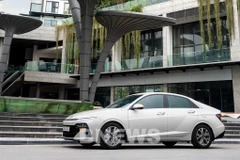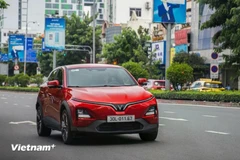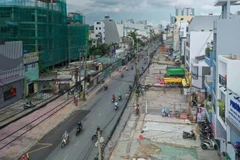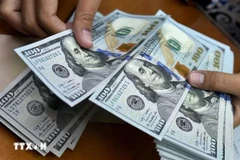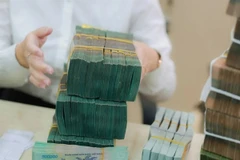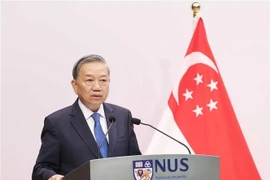Hanoi (VNA) – Blue sea economy is expected to serve as an important motivation and premisefor socio-economic development, environmental protection, defense and securityassurance, and promoting foreign relations and international cooperation.
Vietnamis a coastal state with a sea area three times that of land, includingmore than 3,000 islands and two offshore archipelagos - Hoang Sa and Truong Sa.The country boasts a coastline of 3,260 km, with 1 km of coastline for every100 km2 of land.
Thepopulation of coastal localities accounts for more than 50 percent of thecountry's, with most of the labourers work in sea-relatedoccupations. The contribution of 28 coastal provinces and cities to the nation’sGDP has exceeded 60 percent.
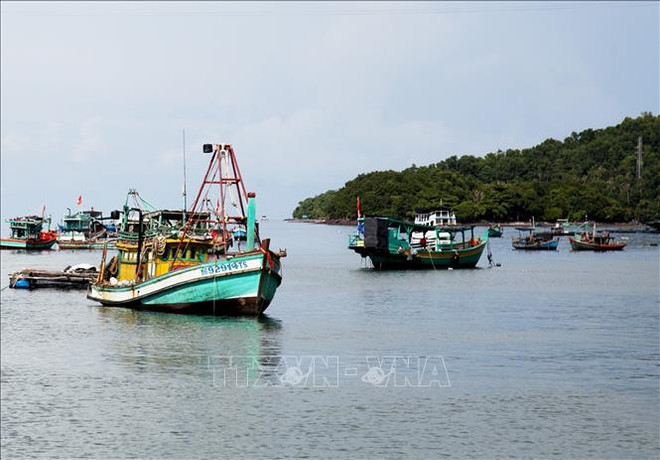 Marine economic sectors play an increasingly important role in recovering socio-economic activities and promoting economic growth in Vietnam (Photo: VNA)
Marine economic sectors play an increasingly important role in recovering socio-economic activities and promoting economic growth in Vietnam (Photo: VNA) After negative impacts of the COVID-19 pandemic, marine economic sectors playan increasingly important role in recovering socio-economic activities andpromoting economic growth in Vietnam.
Vietnam'ssea is considered as one of the 10 richest centres of marine biodiversity inthe world. The waters and islands in the country are home to 12,000 speciesof organisms living in more than 20 typical ecosystem types, belonging to six marine biodiversity regions.
Thereare about 35 types of minerals with different reserves in waters of the country,belonging to the groups of fuel, metal, construction material, precious stoneand liquid mineral.
Large reserves of oil and gas are distributed in sedimentary basins on thecontinental shelf and in Hoang Sa and Truong Sa archipelagos.
According to a report themed “Vietnam’s blueeconomy: Opportunities and challenges" published recently by the VietnamAdministration of Seas and Islands (VASI) under the Ministry of NaturalResources and Environment, maritime economic activities can be dividedinto those at sea, and those not be implemented at sea but directlyrelated to marine exploitation.
Vietnamhas strengthened investment for long-term and sustainable oil and gas industrydevelopment.
Large sea areas hold potential for developing offshorewind power, which is expected to significantly contribute to the country’s socio-economicdevelopment; and the implementation of the Paris Agreement on climatechange and Vientam’s commitment to net zero emissions by 2050.
Withmore than 120 beaches across the country, including 20 meeting internationalstandards, Vietnam has also a great potential for tourism development.
Sea tourism plays a key role, accounting for about two-thirds of the industry'sshare. Tourism resources along the coast of Vietnam serve as a foundation fordeveloping various types of tourism such as sightseeing, entertainment,eco-tourism, resort, sports and culture.
Tomove towards a blue sea economy, experts said Vietnam needs to pay specialattention to conserving biodiversity, protecting the environment and expandingecosystem services to enrich the potential for economic activities./.








